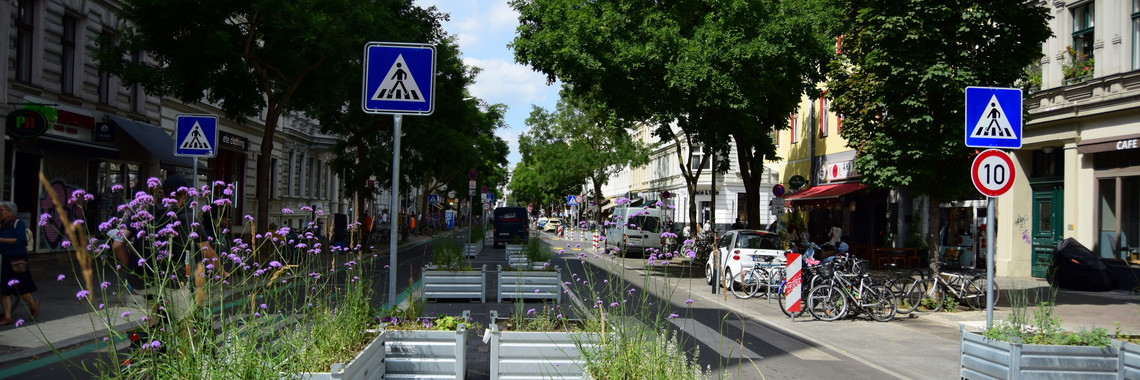Traffic Calming
Traffic calming is an interplay of different measures that displace non-neighbourhood private motorised traffic from neighbourhoods as far as possible and further reduce and slow down the remaining traffic. In most cases, the aim of traffic calming is to improve the quality of life and the quality of time spent in a (residential) environment. Typical measures range from speed reductions up to play streets with traffic restricted to walking speeds, one-way street systems, modal filters or complete road closures in favour of pedestrian and cycle traffic. Large-scale traffic calming measures that build on each other are usually more effective than individual measures.
Probably the best-known traffic calming measures in Europe are the so-called superblocks in Barcelona. But in Berlin, too, the "Kiezblocks" have made a name for themselves as a much-discussed measure of the transformation of mobility. The Bergmannkiez neighbourhood has a special role to play as a pioneer. The current design of traffic calming with provisional and quickly erected means is having an impact: It is significantly reducing both the number of cars and air pollution, demonstrating that local authorities do not have to wait many years until detailed planning is completed in order to relieve highly congested areas of motor vehicle traffic and its negative effects in the very short term.
The provisional traffic calming along Friedrichstrasse also triggered a public discussion and participation by residents that went far beyond the opportunity to comment when the plan was made public. In the course of this discussion, possibilities were discussed that seemed unthinkable in the previous status quo.
The study report on traffic calming in Friedrichstrasse can be found here.
The study report on the traffic-calmed Bergmannkiez can be found here.
